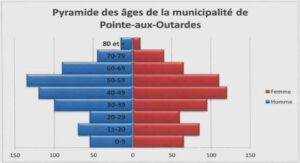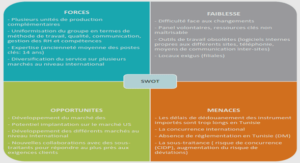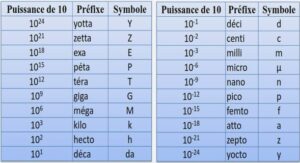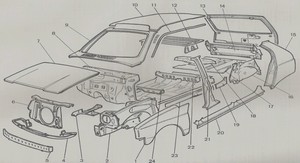The concentration of greenhouse gases in air have increased in recent years, and the consequences have begun to be visible in our environment. The source of these gases is mainly based on industrial processes, combustion engines in the transport system, electricity production, among others (EPA, 2017).
Concentration levels of gases harmful to humans have become a metric that requires constant supervision for open areas or enclosed spaces (Arshak, 2004; Kumar, Kim, & Hancke, 2013; Mahyuddin & Awbi, 2012).
The global CO2 concentration level in the atmosphere has been steadily increasing over the last decades. The measurements made indicate that the global CO2 level of 400 ppm has been exceeded in 2018, being a drastic change in a short period of time from 340 ppm in only a period of 20 years (ESRL, 2020).
The constant need to monitor the concentration of gases such as CO2 in open spaces or areas of common use among people, has encouraged the development of economical, reduced and low power consumption gas sensors. Notably, the sensors with the greatest expansion potential are Oxygen (O), Carbon Dioxide (CO2), and Nitrogen Oxide (NOX) sensors. This has led to the market for gas sensors being valued at more that USD 2 billion since 2018 with a Compound Annual Growth Rate Calculator (CAGR) of 7.8% to reach in 2025. (« Gas Sensor Market Size, Share & Trends Analysis Report By Product (CO2, NOx, CO, O2 Sensors), By Technology (Semiconductor, Infrared), By End Use (Building Automation & Domestic Appliance, Industrial), And Segment Forecasts, 2019 – 2025, » 2019).
Evaluation of the geometries and excitation method for micro-resonators for gas sensing
During the development of this work, two micro-resonator chips were manufactured using different manufacturing and excitation techniques in order to ascertain the optimal microresonator geometry for the targeted application. The first chip was manufactured using the PolyMUMPS commercial process, which uses electrostatic excitation and has three layers of Polysilicon available. The second chip was manufactured using the commercial process of PiezoMUMPS, which uses a layer of piezoelectric material for the micro-resonator’s excitation. Different geometries were manufactured in the two chips and were analyzed to be applied in the CO2 MEMS sensor.
Comparison between multiple adsorbent materials for CO2
For the selection of the adsorbent material, three options based on Polyethylenimine (PEI) were analyzed, in which its properties and performance were analyzed under different conditions allowing the best of them to be selected for use with the micro-resonator.
Fully integrated CO2 MEMS sensor demonstration
The micro-resonator, adsorbent coating and sustaining amplifier were integrated to demonstrate a complete integrated CO2 sensor. Once the sensor was integrated, a complete characterization was carried out showing the capabilities and limitations of this type of solutions for the measurement of CO2 concentration, as well as its advantages over commercial sensors.
Adsorbent material disposition method and gas chamber test setup
A deposition method to deposit a droplet of adsorbent material on a released micro-resonator after its micro-fabrication was devised. A custom gas chamber test setup was designed and implemented to characterize the proposed sensor and allow its optical characterization using a vibrometer.
Main parameters of gas sensors
The measurement of the gas concentration in a specific space is of high relevance for many sectors, i.e. industrial production, mining, automotive, medical applications, environment conditions, indoor air quality, etc. Each sector has specific requirements based in the conditions and applications of the sensor; this requirement will define the sensing technique to be used and the performance will be delimited by this technique. Amongst the main characteristics that a sensor needs to satisfy, we find the sensibility of detection of the target gas, this means the minimum value of concentration that the sensor is capable of measuring with precision. The repeatability of the measurements within the same conditions is a basic value that establishes the reliability of the sensor to be applied. The selectivity of the target gas is a crucial parameter in special at environment atmosphere, where the mixture and concentration of different gases change constantly, and the sensor needs to separate the target gas and obtain a reliable measure of it in comparison with the rest of the gas mixture.
Reaction time can be an important parameter for specific application, where the reaction of a subsystem depends of the measurement of the target gas in real time, or in systems where the concentration of the gas changes drastically in a short period and it is necessary to follow this change with precision.
The concentration range of the gas that the sensor can operate is defined by the measure range. This limitation could be paramount when the process to be evaluated changes to a much wider range. The sensors with a wide concentration range usually have very low precision.
Once the sensor takes the measurement it is important that the system readapts to the current condition, this is known as reversibility. The sensing technique that uses a non-reversible chemical process, shortens the life span of the product, or alters its performance with the passing of time, also affected by the damage caused by the same reaction.
As a commercial consideration the fabrication cost will be an important parameter that defines whether the technology is competitive with other technologies. In the same way the power consumption will be a definitive parameter, specially for portable sensing equipment where the energy is provided by internal batteries (Arshak, Moore, Lyons, Harris, & Clifford, 2004; D. D. Lee, 2001; X. Liu et al., 2012).
Gas sensing techniques
As a general classification of the techniques used in the main gas sensor, it is possible to consider two main blocks, an electrical resistance variation based in the presence of the target gas and a second group of techniques that uses physics behaviors, like photons absorption, sound waves absorption or mass additional that change mechanical properties of the sensor.
INTRODUCTION |





